Diffuse idiopathic skeletal hyperostosis and axial spondyloarthritis—similarities and differences
Diffuse idiopathic skeletal hyperostosis (DISH) and axial spondyloarthritis (axSpA) are diseases with inflammatory involvement of the axial skeleton that can result in new bone formation that may le
[...] Read more.
Diffuse idiopathic skeletal hyperostosis (DISH) and axial spondyloarthritis (axSpA) are diseases with inflammatory involvement of the axial skeleton that can result in new bone formation that may lead to total ankylosis of the spine and functional impairment of different extent in individual patients. In these diseases, the new bone formation may lead to total ankylosis of the spine and impaired mobility with functional impairment. This review will highlight the similarities and differences of these two conditions. In axSpA, the genetic background with the association with human leukocyte antigen-B27 (HLA-B27) is known for 50 years, while in DISH, a genetic contribution is not yet proven. The phenotype of new bone formation and its anatomic features are different between these diseases. In axSpA symmetric, thin and marginal syndesmophytes representing an ossification of enthesitic inflammation at the area of the attachment of the annulus fibrosus that may extend to the adjacent deeper layers anterior longitudinal ligament and are typical, while in DISH the so-called “chunky bridging osteophytes” grow as an additional layer on the anterior longitudinal ligament. Besides distinct anamnestic and clinical features, magnetic resonance imaging is helpful differentiating the two diseases since inflammatory changes with the typical pattern of axSpA are reliably visualized. Similar in both diseases is the high prevalence of vertebral fractures, which are mainly caused by the local osteoporosis and decreased flexibility of the affected bones, and therefore may occur even after minor traumata. The presence of extraarticular manifestations like uveitis, inflammatory bowel disease or psoriasis are only linked to axSpA. In contrast, DISH is associated with obesity, diabetes mellitus, and other metabolic diseases. Although DISH and axSpA are distinct conditions, the cooccurrence of these two diseases exists in some patients. Various therapeutic options are becoming available for axSpA, but no therapy has been approved for DISH yet.
David Kiefer ... Xenofon Baraliakos
View:1630
Download:44
Times Cited: 0
Diffuse idiopathic skeletal hyperostosis (DISH) and axial spondyloarthritis (axSpA) are diseases with inflammatory involvement of the axial skeleton that can result in new bone formation that may lead to total ankylosis of the spine and functional impairment of different extent in individual patients. In these diseases, the new bone formation may lead to total ankylosis of the spine and impaired mobility with functional impairment. This review will highlight the similarities and differences of these two conditions. In axSpA, the genetic background with the association with human leukocyte antigen-B27 (HLA-B27) is known for 50 years, while in DISH, a genetic contribution is not yet proven. The phenotype of new bone formation and its anatomic features are different between these diseases. In axSpA symmetric, thin and marginal syndesmophytes representing an ossification of enthesitic inflammation at the area of the attachment of the annulus fibrosus that may extend to the adjacent deeper layers anterior longitudinal ligament and are typical, while in DISH the so-called “chunky bridging osteophytes” grow as an additional layer on the anterior longitudinal ligament. Besides distinct anamnestic and clinical features, magnetic resonance imaging is helpful differentiating the two diseases since inflammatory changes with the typical pattern of axSpA are reliably visualized. Similar in both diseases is the high prevalence of vertebral fractures, which are mainly caused by the local osteoporosis and decreased flexibility of the affected bones, and therefore may occur even after minor traumata. The presence of extraarticular manifestations like uveitis, inflammatory bowel disease or psoriasis are only linked to axSpA. In contrast, DISH is associated with obesity, diabetes mellitus, and other metabolic diseases. Although DISH and axSpA are distinct conditions, the cooccurrence of these two diseases exists in some patients. Various therapeutic options are becoming available for axSpA, but no therapy has been approved for DISH yet.
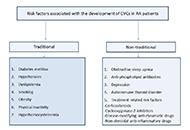 Rheumatoid arthritis and cardiovascular comorbiditiesOpen AccessReviewRheumatoid arthritis (RA) is the most common rheumatologic disease characterized by inflammation with a definite relationship with heart disease. Impaired immunity, chronic inflammation, genetic sus [...] Read more.Uğur Özkan ... Murat BirtanePublished: December 06, 2023 Explor Musculoskeletal Dis. 2023;1:264–288
Rheumatoid arthritis and cardiovascular comorbiditiesOpen AccessReviewRheumatoid arthritis (RA) is the most common rheumatologic disease characterized by inflammation with a definite relationship with heart disease. Impaired immunity, chronic inflammation, genetic sus [...] Read more.Uğur Özkan ... Murat BirtanePublished: December 06, 2023 Explor Musculoskeletal Dis. 2023;1:264–288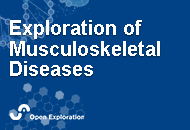 Calcium pyrophosphate crystal deposition disease—what’s new?Open AccessEditorialJürgen BraunPublished: December 06, 2023 Explor Musculoskeletal Dis. 2023;1:257–263
Calcium pyrophosphate crystal deposition disease—what’s new?Open AccessEditorialJürgen BraunPublished: December 06, 2023 Explor Musculoskeletal Dis. 2023;1:257–263 How should we do in the selection and follow-up of systemic conventional treatments in psoriasis?Open AccessReviewThere is an increasing need for appropriate effective treatment and long-term disease control in patients with psoriasis because of the decreased quality of life, increased physicosocial deficits an [...] Read more.Sevgi AkarsuPublished: December 05, 2023 Explor Musculoskeletal Dis. 2023;1:241–256
How should we do in the selection and follow-up of systemic conventional treatments in psoriasis?Open AccessReviewThere is an increasing need for appropriate effective treatment and long-term disease control in patients with psoriasis because of the decreased quality of life, increased physicosocial deficits an [...] Read more.Sevgi AkarsuPublished: December 05, 2023 Explor Musculoskeletal Dis. 2023;1:241–256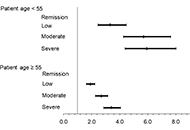 Impact of disease activity on patient-reported subjective cognitive decline in patients with rheumatoid arthritisOpen AccessOriginal ArticleAim: To evaluate the association of disease activity with patient-reported subjective cognitive decline (SCD) in patients with rheumatoid arthritis (RA) stratified by age. Methods: A cross- [...] Read more.Ozlem Pala ... Joel M. KremerPublished: December 05, 2023 Explor Musculoskeletal Dis. 2023;1:228–240
Impact of disease activity on patient-reported subjective cognitive decline in patients with rheumatoid arthritisOpen AccessOriginal ArticleAim: To evaluate the association of disease activity with patient-reported subjective cognitive decline (SCD) in patients with rheumatoid arthritis (RA) stratified by age. Methods: A cross- [...] Read more.Ozlem Pala ... Joel M. KremerPublished: December 05, 2023 Explor Musculoskeletal Dis. 2023;1:228–240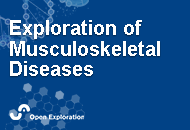 Diffuse idiopathic skeletal hyperostosis, beyond the musculoskeletal systemOpen AccessReviewIt has been suggested that diffuse idiopathic skeletal hyperostosis (DISH), a skeletal disease characterized by the ligamentous ossification of the anterolateral spine, is a radiological entity with [...] Read more.Fabiola Atzeni ... Reuven MaderPublished: December 04, 2023 Explor Musculoskeletal Dis. 2023;1:216–227
Diffuse idiopathic skeletal hyperostosis, beyond the musculoskeletal systemOpen AccessReviewIt has been suggested that diffuse idiopathic skeletal hyperostosis (DISH), a skeletal disease characterized by the ligamentous ossification of the anterolateral spine, is a radiological entity with [...] Read more.Fabiola Atzeni ... Reuven MaderPublished: December 04, 2023 Explor Musculoskeletal Dis. 2023;1:216–227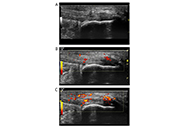 Relationship between tendon elastography and clinical and ultrasound enthesitis scores in patients with psoriasis or psoriatic arthritisOpen AccessOriginal ArticleAim: To determine the existence of a correlation between the elastographic study of the patellar and Achilles tendons and the enthesis evaluation in patients with psoriasis with or without psoria [...] Read more.Carlos A. Guillén-Astete ... Mónica Vázquez-DíazPublished: November 20, 2023 Explor Musculoskeletal Dis. 2023;1:207–215
Relationship between tendon elastography and clinical and ultrasound enthesitis scores in patients with psoriasis or psoriatic arthritisOpen AccessOriginal ArticleAim: To determine the existence of a correlation between the elastographic study of the patellar and Achilles tendons and the enthesis evaluation in patients with psoriasis with or without psoria [...] Read more.Carlos A. Guillén-Astete ... Mónica Vázquez-DíazPublished: November 20, 2023 Explor Musculoskeletal Dis. 2023;1:207–215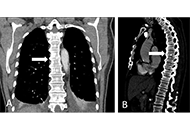 Diffuse idiopathic skeletal hyperostosis and axial spondyloarthritis—similarities and differencesOpen AccessReviewDiffuse idiopathic skeletal hyperostosis (DISH) and axial spondyloarthritis (axSpA) are diseases with inflammatory involvement of the axial skeleton that can result in new bone formation that may le [...] Read more.David Kiefer ... Xenofon BaraliakosPublished: November 20, 2023 Explor Musculoskeletal Dis. 2023;1:194–206
Diffuse idiopathic skeletal hyperostosis and axial spondyloarthritis—similarities and differencesOpen AccessReviewDiffuse idiopathic skeletal hyperostosis (DISH) and axial spondyloarthritis (axSpA) are diseases with inflammatory involvement of the axial skeleton that can result in new bone formation that may le [...] Read more.David Kiefer ... Xenofon BaraliakosPublished: November 20, 2023 Explor Musculoskeletal Dis. 2023;1:194–206